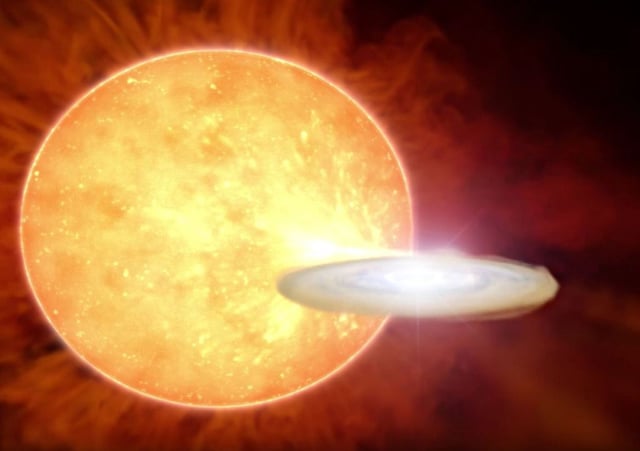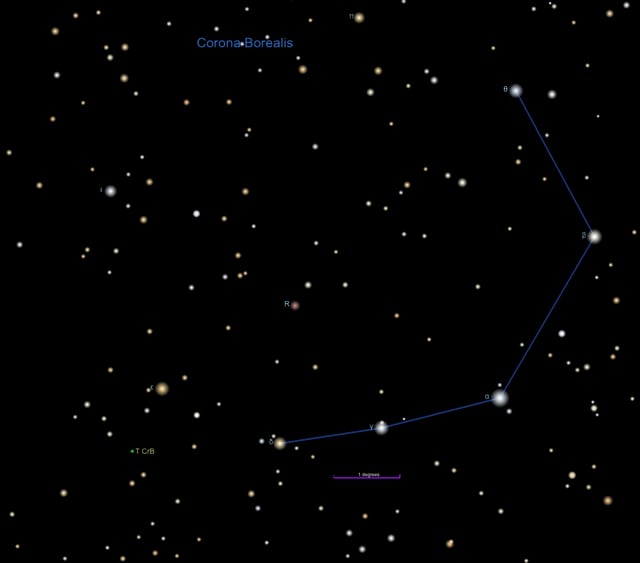Overview
- T Coronae Borealis (T CrB), a recurrent nova, was predicted to brighten in 2024 but has yet to do so as of early 2025.
- The binary star system, located 2,000 light-years away, undergoes nova outbursts approximately every 80 years due to hydrogen accretion on its white dwarf companion.
- Recent spectral observations show increased hydrogen line activity, suggesting heightened accretion rates that could precede an eruption.
- During an outburst, T CrB's brightness could reach 2nd magnitude, making it briefly visible to the naked eye in the constellation Corona Borealis.
- Astronomers worldwide, including teams using advanced telescopes like JWST and Hubble, are closely monitoring the star for further developments.

